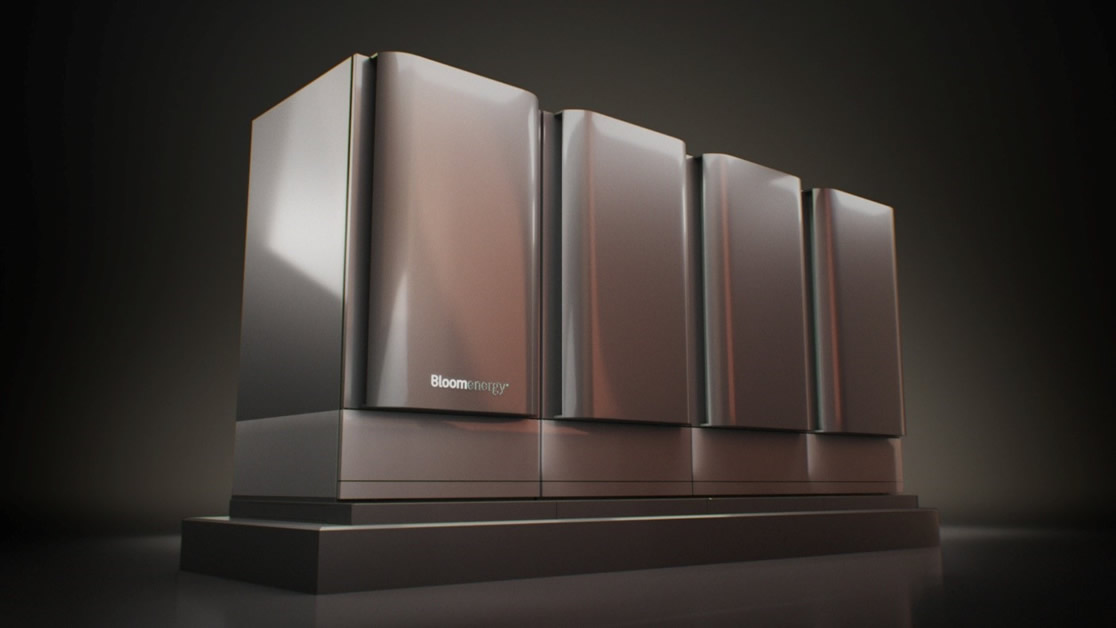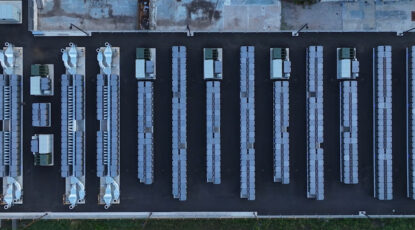Our newest product – the Bloom Electrolyzer – started as a hallway conversation in mid-2020 as a resurgence in hydrogen strategies surfaced to meet calls for global decarbonization. From start to finish, it took less than a year for our engineering team to build an initial version of this innovative product and test its feasibility. Our ability to act decisively and remove obstacles is part of Bloom Energy’s DNA, and one of the most rewarding aspects of working with this team. We accomplish this by continually reinventing and evolving our processes, which serves as the foundation for Bloom Energy innovation. We at Bloom Energy know how to make a vision a reality.
The launch of the Bloom Electrolyzer also brings us full circle to our company’s roots. Our company’s founders established Bloom Energy to explore applications for solid oxide technology here on Earth after working on the same technology to create oxygen from carbon dioxide and water as part of NASA’s mission to Mars. We reversed the technology to produce electricity from a fuel source without harmful combustion. Ultimately, this resulted in a versatile platform solution that allows us to provide clean, reliable power generation and a pathway to decarbonization. Last year our engineering team began to revisit how our early electrolyzer technology could support a rejuvenated global interest in creating a hydrogen economy. Electricity is the ultimate perishable. Hydrogen is the solution for reliable storage of renewable electricity.
Because of our deep expertise in solid oxide technology and the experience gained from deploying more than 500 megawatts of fuel cells, we can quickly deliver an electrolyzer to produce hydrogen that meets today’s energy needs.
Using electricity, our high temperature electrolyzer splits water or steam into hydrogen and oxygen. Once the hydrogen is separated from the oxygen, the hydrogen can be utilized, stored, injected into the gas network, or transported for use elsewhere for making specialty chemicals, generating power, or powering fuel cell cars. The Bloom Electrolyzer can also utilize thermal energy, reducing electricity intake and lowering the cost of hydrogen production to create economically viable pathways to widespread hydrogen adoption. I am optimistic that with the introduction of the high efficiency Bloom Electrolyzer, we can leap frog into the future, accelerating the energy transition.
Our Remarkable Efficiency
So, what makes the Bloom Electrolyzer exceptional?
There are three distinguishing features of our product.
First, we ensure an unrivaled level of efficiency. Our high-temperature electrolyzer creates hydrogen that is at least 15 percent more efficient compared to low-temperature PEM and alkaline electrolyzers due to fundamental thermodynamics, which reduces the overall energy consumption to produce hydrogen.
Second, high-temperature operation allows for the use of low-cost process steam from waste heat or otherwise in the electrolysis process, which significantly reduces the use of electrical energy for hydrogen generation and thereby further increasing efficiencies.
Third, since a majority of components used in the electrolyzer modules are the same as what’s used in fuel cells, it enables Bloom to reduce overall capital costs over time to encourage a low-cost hydrogen future.
Leadership through Collaboration
This highly efficient method of creating hydrogen is one essential element in the transition to a clean energy future, but we cannot act alone. We must bring together industry partners to solve the many obstacles that stand before us. Over the last several months our team has advanced our commitment to make a clean energy future a reality through diversified collaborations.
In November 2020, we announced our first pilot in partnership with SK EcoPlant (formerly known as SK Engineering and Construction, for which we were awarded a contract to supply our electrolyzer to Korea’s Changwon RE100 project. In May, we announced testing with the U.S. Department of Energy’s Idaho National Laboratory (INL) to independently test the use of nuclear energy to create clean hydrogen through the Bloom Electrolyzer. Recently, we also teamed up with clean energy technology company Baker Hughes to explore the potential commercialization and deployment of numerous initiatives, including integrated hydrogen solutions to advance the energy transition. In July we announced a collaboration with Heliogen, a renewable energy tech company, to produce green hydrogen using the Bloom Electrolyzer and concentrated solar power (CSP). This list of collaborations and opportunities for the Bloom Electrolyzer is by no means complete.
These collaborations represent the first mile markers on the long path to a clean energy future. Fulfilling that mission means we must continue to bring together many players that represent all facets of the industry to accomplish the mission.
It’s important we at Bloom, and across the private industry and with the public sector, continue to seek complementary technologies, create alliances, and lend a hand to see our shared, common goal of creating a net-zero carbon future become a shared reality. That shared reality requires a vast ecosystem of pragmatic solutions for the global energy landscape.
From the beginning, our company mission has been to make clean, reliable energy affordable for everyone in the world. We have expanded this vision further to create a pathway to complete decarbonization. All of us here at Bloom are driven by this mission and vision, and I’m proud of the progress we are making toward it, continually innovating to create solutions that meet our planet’s most pressing energy needs.
For more information about the Bloom Electrolyzer and our commitment to a zero-carbon future, visit: www.bloomenergy.com/bloomelectrolyzer.



